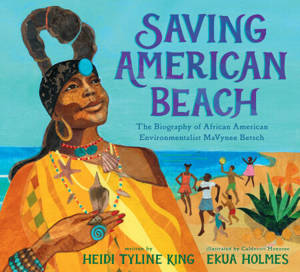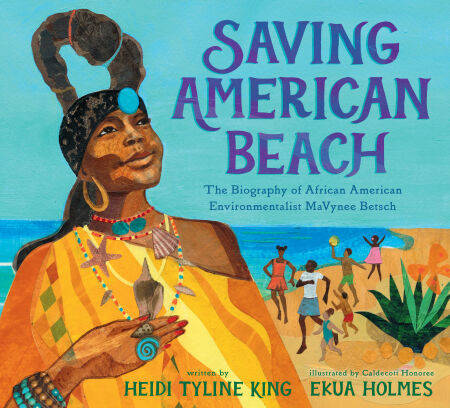
Je cadeautjes zeker op tijd in huis hebben voor de feestdagen? Kom langs in onze winkels en vind het perfecte geschenk!
- Afhalen na 1 uur in een winkel met voorraad
- Gratis thuislevering in België vanaf € 30
- Ruim aanbod met 7 miljoen producten
Je cadeautjes zeker op tijd in huis hebben voor de feestdagen? Kom langs in onze winkels en vind het perfecte geschenk!
- Afhalen na 1 uur in een winkel met voorraad
- Gratis thuislevering in België vanaf € 30
- Ruim aanbod met 7 miljoen producten
Zoeken
Saving American Beach E-BOOK
The Biography of African American Environmentalist MaVynee Betsch
Heidi Tyline King
E-book | Engels
€ 12,71
+ 12 punten
Uitvoering
Omschrijving
This heartfelt picture book biography illustrated by the Caldecott Honoree Ekua Holmes, tells the story of MaVynee Betsch, an African American opera singer turned environmentalist and the legacy she preserved.
MaVynee loved going to the beach. But in the days of Jim Crow, she couldn't just go to any beach--most of the beaches in Jacksonville were for whites only. Knowing something must be done, her grandfather bought a beach that African American families could enjoy without being reminded they were second class citizens; he called it American Beach. Artists like Zora Neale Hurston and Ray Charles vacationed on its sunny shores. It's here that MaVynee was first inspired to sing, propelling her to later become a widely acclaimed opera singer who routinely performed on an international stage. But her first love would always be American Beach.
After the Civil Rights Act desegregated public places, there was no longer a need for a place like American Beach and it slowly fell into disrepair. MaVynee remembered the importance of American Beach to her family and so many others, so determined to preserve this integral piece of American history, she began her second act as an activist and conservationist, ultimately saving the place that had always felt most like home.
MaVynee loved going to the beach. But in the days of Jim Crow, she couldn't just go to any beach--most of the beaches in Jacksonville were for whites only. Knowing something must be done, her grandfather bought a beach that African American families could enjoy without being reminded they were second class citizens; he called it American Beach. Artists like Zora Neale Hurston and Ray Charles vacationed on its sunny shores. It's here that MaVynee was first inspired to sing, propelling her to later become a widely acclaimed opera singer who routinely performed on an international stage. But her first love would always be American Beach.
After the Civil Rights Act desegregated public places, there was no longer a need for a place like American Beach and it slowly fell into disrepair. MaVynee remembered the importance of American Beach to her family and so many others, so determined to preserve this integral piece of American history, she began her second act as an activist and conservationist, ultimately saving the place that had always felt most like home.
Specificaties
Betrokkenen
- Auteur(s):
- Illustrator(s):
- Uitgeverij:
Inhoud
- Aantal bladzijden:
- 40
- Taal:
- Engels
Eigenschappen
- Productcode (EAN):
- 9781101996300
- Verschijningsdatum:
- 12/04/2021
- Uitvoering:
- E-book
- Beveiligd met:
- Adobe DRM
- Formaat:
- ePub 3 Fixed Layout

Alleen bij Standaard Boekhandel
+ 12 punten op je klantenkaart van Standaard Boekhandel
Beoordelingen
We publiceren alleen reviews die voldoen aan de voorwaarden voor reviews. Bekijk onze voorwaarden voor reviews.









